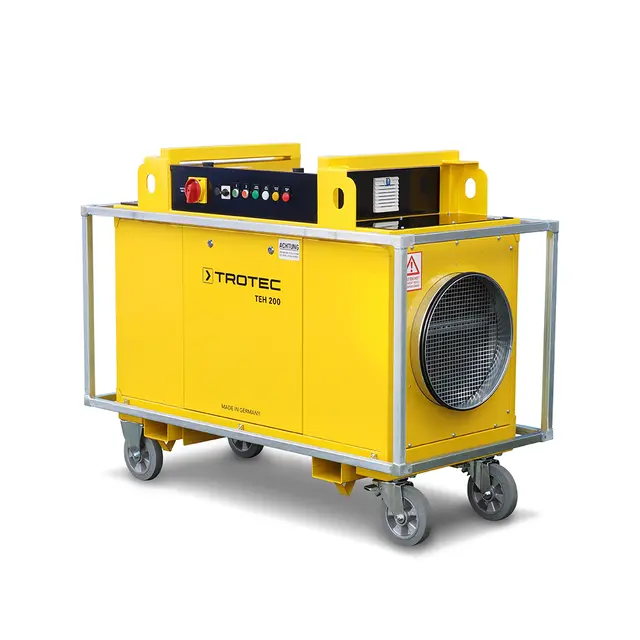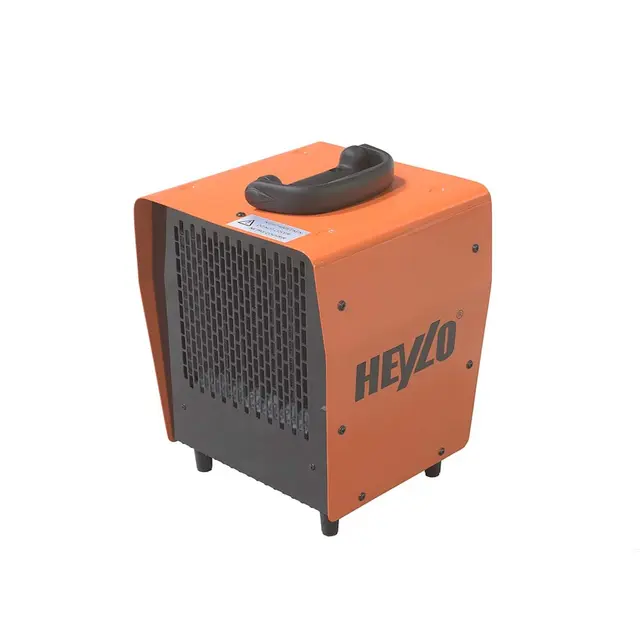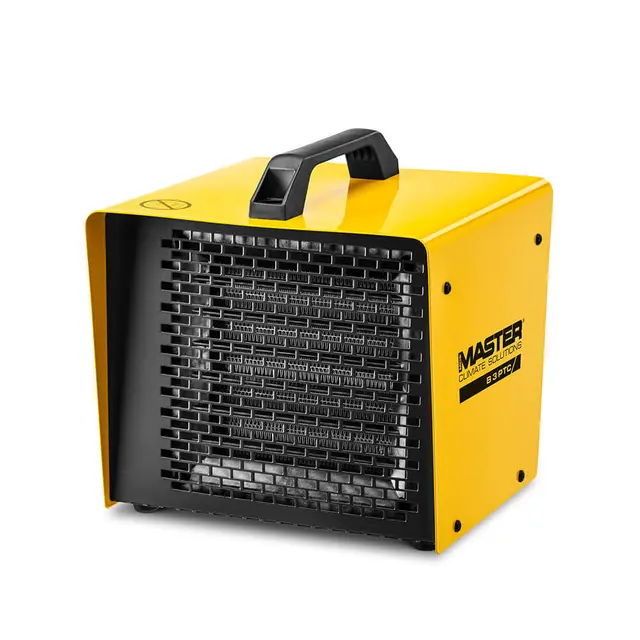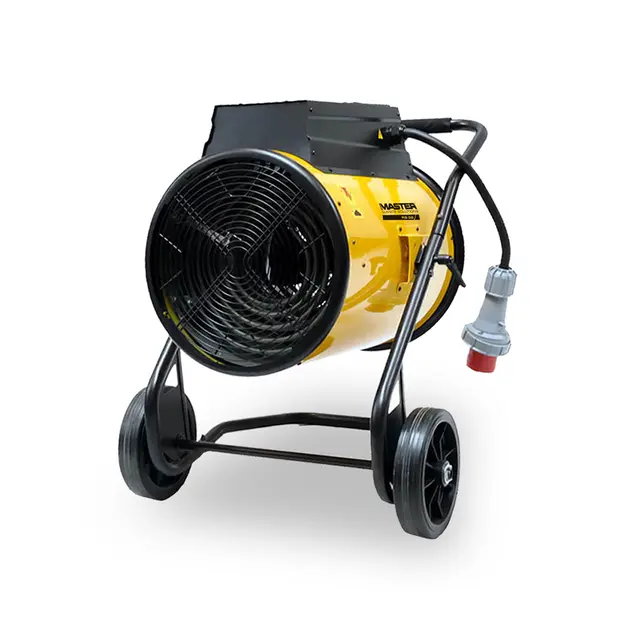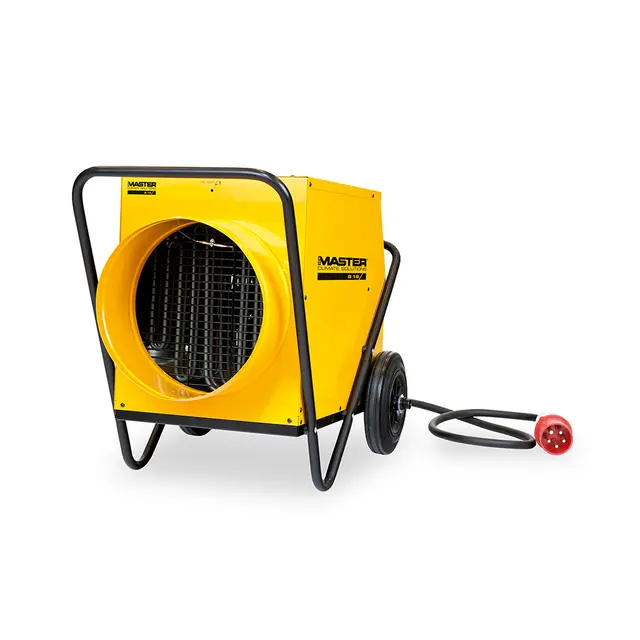How to use commercial electric heaters

- Home
- Insights
- Heating insights
- How to use commercial electric heaters
Whether it's keeping teams warm, property dry or material treated, electric fan air heaters are robust units suited to many commercial applications. Discover how to operate these units safely while maximising energy efficiency.
When inside spaces are cold, the people living and working inside them will not only experience a greater degree of discomfort, but their productivity will also plummet.

Too much time in these chilly and uncomfortable environments can also make people more tired and less focused. Especially in workspaces with heavy equipment, lapses in concentration can drastically increase the risk of injury.
In extreme cases, hypothermia results in greater susceptibility to infections, and these often lead to an inability to work. This can drive greater losses, which are very measurable.
The different types of electric heaters
To avoid the onset of unpleasant and unsafe conditions inside a warehouse, shop, construction site or any other commercial property, a purpose-built electric fan air heater can efficiently and effectively regulate cold temperatures indoors.
Using the power of electricity, these heaters produce no fumes or unpleasant odours, making them ideally suited to regulating indoor conditions in spaces without the need for continuous ventilation.
Beyond just heating the air, these units can also be employed for a multitude of different roles, such as drying, pest control and hardening certain materials. Furthermore, heaters can be used in varying degrees – either as a primary source of heat, a backup source or as a complement to central heating systems and electric radiators.

To accommodate the variety of use cases and roles these units must fulfil, there are several different types of electric fan air heaters.
EPB heaters
The B 9, and other types of EPB heaters, utilise conventional tubular air heating elements to reliably produce and circulate swathes of warm air inside.
Due to their relatively simple design, these types of units are often reliable and inexpensive, making them an effective solution for businesses looking to heat the air inside.
These units can mitigate the effects of cold weather within areas such as factories, warehouses, schools and building sites.
The EPB series also perfectly increase the efficiency of water damage restoration equipment.
EPR and RS heaters
EPR and RS heaters akin to the B 18 share much of the same attributes as EPB heaters, with one key difference – these units are specifically designed to accommodate an external duct connection.
With the ability to duct heat, EPR and RS units can be used to spot heat specific areas, or regulate the temperature across multiple rooms.
EPR and RS heaters are optimally suited for a wide number of scenarios, such as construction sites, industries and effectively heating tents for emergency and special events.
PTC heaters
PTC air heaters, such as the B 3 PTC, are a specific type of electric heater that, instead of using conventional tubular coils as its heating element, opt for a grille of joined thermistors and aluminium strips to emit warm air.
While PTC heaters cannot be used within dusty spaces like building sites, as the construction of the unit makes it susceptible to dirt accumulation, they can play a key role in warming homes, small workshops, offices and public buildings.
These devices can also be used to heat small rooms and spot heat work areas, as they can generate large volumes of warm air quickly with minimal air flow.
EKO heaters
To treat certain materials or remove unwanted pests, high temperatures are a necessity in some commercial scenarios. Units like the EKO 9 can withstand these extreme conditions, as they have been specifically designed with heat resistance in mind.
As EKO technology is capable of heating rooms with high temperatures, these devices can thermally disinfect rooms and buildings and be used to thermally cure special materials, such as thermoset resin.
This makes EKO heaters ideally suited for use in areas such as pest control services, hospitals and shipyards.
In the construction industry, these devices find their role in the final phase and are used to neutralise harmful chemicals that are introduced into the premises during finishing works with adhesives, paints and resins.

How to use commercial electric heaters safely
While there are several different types of commercial electric heaters on the market, the considerations and steps required to safely set up and operate these units are applicable across all of them.
Read the manual
Electric heaters are exceptionally safe. But, to maximise the safety of those working or occupying these spaces, it is important to read the user manual supplied with the unit.
Containing vital safety information such as the energy requirements of a particular machine, and where and where not to position a unit, the manual is vital in preserving both the wellbeing of workers and the condition of the heating units.
Check for damage
Before setting the input and turning the heating unit on, it is also important to check the unit for damage periodically. Loose screws, frayed cables and dents to the unit itself are common signs that maintenance or repairs are needed.
Beyond a visual assessment, it is also important to listen for any unusual sounds, out-of-ordinary vibrations or new smells emerging from a unit. If the condition is allowed to degrade, this could risk the safety of employees.
Consider placement
Before switching a unit on, another consideration to bear in mind is the placement of the unit. Consulting the user manual and other documentation that comes with the machine will dictate what to avoid placing the heater nearby.
In general, electric fan air heaters must be kept a suitable distance away from people, water, metal and flammable materials for maximum comfort and safety. In some cases, a unit will need to be positioned outside a room or tent, with the warm air ducted in.

As well as being a crucial safety requirement, conducting these tips, regularly assessing the condition of a unit, and keeping this technology in good working order can help keep the cost of ownership to a minimum.
Choose the optimal electric heater for your needs
With soaring energy bills throughout Europe and much of the world, the average cost of ownership is just one figure to consider. It is also crucial to select a unit that will minimise energy bills and maximise long-term savings.
Despite being a 100% energy-efficient technology, the amount of electricity used will fluctuate depending on the role a unit must perform, the type of unit selected, and the size and capacity of a given model, among other variables.
When selecting the ideal fan-assisted electric heater to minimise running costs, it is important to consider:
The size of a space
To determine how powerful an electric heater you require, it is crucial to consider the size of the space that must be heated.
If a unit is too powerful, the volume of heat generated could create an uncomfortable or even unsafe space for people to inhabit, while sending energy bills soaring at the same time.
Conversely, a unit too small may not be able to create a suitably warm environment. Multiple units may have to operate simultaneously, further compromising energy efficiency.
The desired temperature of an area
Another factor to bear in mind when choosing the right electric fan heater is the conditions that must be achieved inside an area.
If a zone demands a high temperature to neutralise unwanted insects and bugs, for example, selecting a unit without the capability to produce high enough temperatures will limit the effectiveness of the machine and reduce the savings that can be made.
In another scenario, if a listed building requires more delicate temperature control during a water damage restoration project, and the chosen heater sends inside temperatures soaring, ornate furnishings can be damaged while energy usage soars.
The power available
It is also crucial to consider the power available on certain sites. While smaller and less capable units can utilise a single-phase connection, more capacious heaters always require a three-phase power supply.
If a warehouse, home or office does not have the power capacity to support more powerful units, they may not be able to operate.
Keep your commercial property reliably warm
From warming classrooms and treating epoxy in shipyards, to drying plaster on construction sites and restoring water-damaged properties, electric fan air heaters are exceptionally versatile and robust units.
However, not all heating solutions are created equal – to maximise employee safety while limiting energy usage, it is crucial to select a unit from an experienced and trusted manufacturer.
Master has over 70 years of experience in climate control and has supplied countless clients with robust, reliable and efficient heaters all over the world. Our decades of expertise are not just evident in our service, it’s at the core of every Master heater.
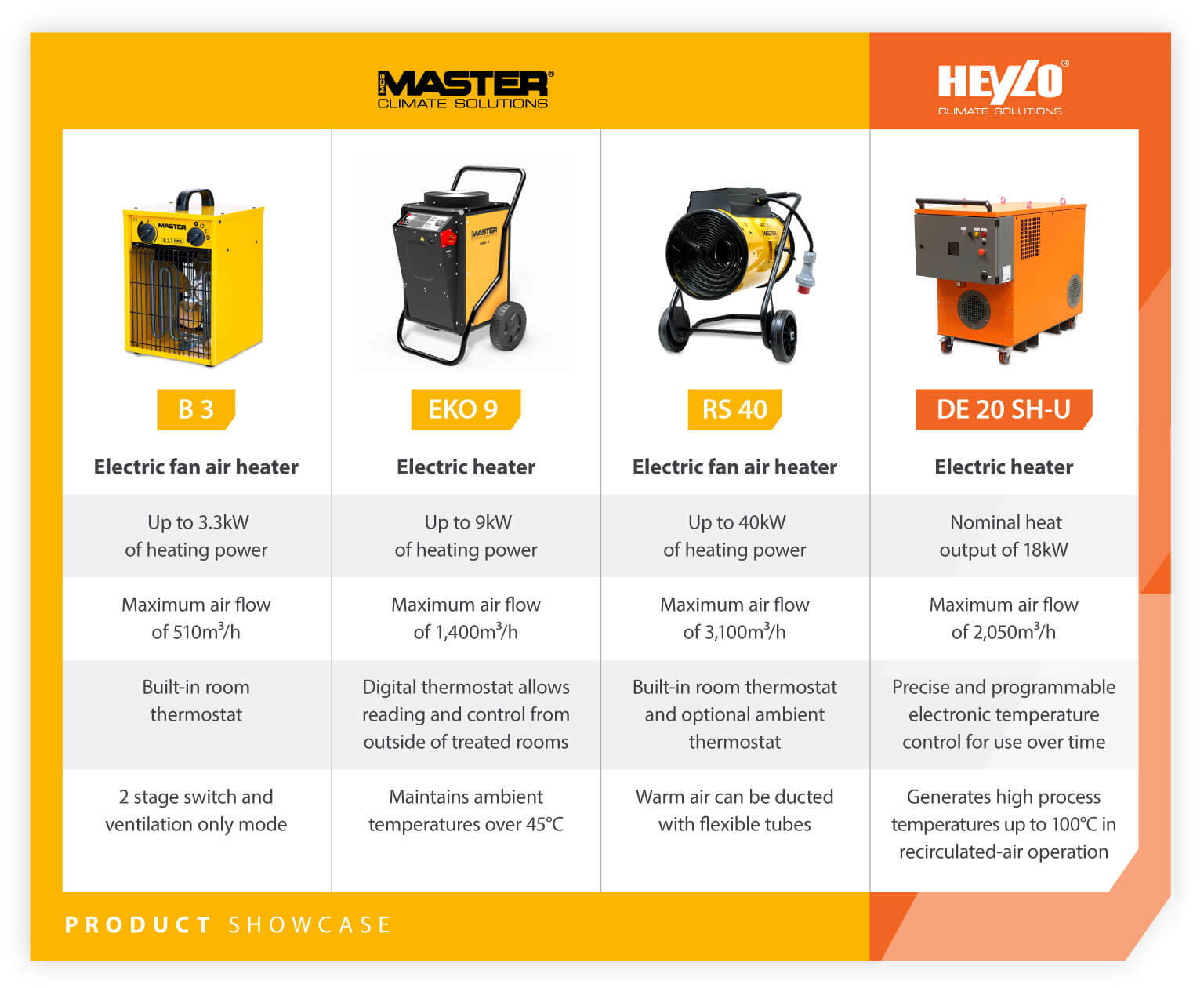
Beyond our range of high-quality heaters, Master is the manufacturer of choice for businesses and contractors throughout Europe. This is because:
We use high-quality, long-lasting components – from durable motors to electric elements built to last – maximising the lifecycle of our units
We guarantee the availability of spare parts for at least 10 years, helping you keep your heaters in good working order for as long as possible
Our comprehensive network of spares, advice and technicians can be accessed throughout Europe, over the phone, whenever you need
We support all of our machines with an unprecedented 3-year limited warranty, giving you complete peace of mind
For more information about our range of electric heaters and which unit is optimally suited to your environment, get in touch with our team by using the form below.
Related products
Featured insights

Become the go-to supplier for construction and water damage restoration

Why you need more than just any old portable heater

The dos and don’ts of getting heaters ready for winter.
Need help with choosing the right solution? Our team of over 100 climate control experts can assist.
You can also reach out or join the discussion on our Social Media. Check out our LinkedIn page.
